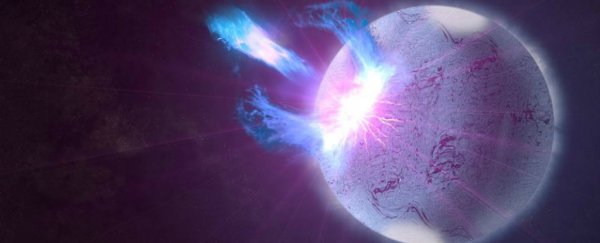Researchers have investigated the internal soundwaves created by starquakes – oscillations and flashes of energy created by stars – to determine the orientation on which they spin.
These starquakes, which make the stars ring like a bell, provide a whole new insight into the conditions of the Universe when stars formed billions of years ago.
"Just as seismologists use earthquakes to understand the interior of our planet, we use starquakes to understand the interior of stars," says Dennis Stello, one of the researchers from the University of New South Wales (UNSW) in Australia.
"Our new study provides the first evidence that this approach is a powerful way to gain insights into processes that occurred billions of years ago, close to the beginning of the universe."
You can hear the noises that starquakes make below:
Okay, so it's definitely subtle, but the information the researchers were able to gather is anything but.
The study looked at 48 red giants in two ancient star clusters in the Milky Way – the first formed over 2 billion years ago, and the other 8 billion years ago.
Star nurseries – where massive clouds of gas and dust collapse to form giant clusters of stars – are really difficult to study directly because of all that dust and gas.
Instead, to investigate the stars' origins, the astronomers had to use another method – listening to ancient star clusters.
"The benefit of studying ancient star clusters is that the interfering dust and gas has gone, yet the stars still preserve the signature of the initial conditions in the cloud where they were born," says Stello.
Using NASA's Kepler space observatory, the team investigated four years of the starquakes and oscillations, and determined that the orientation of their spinning angle was strongly aligned in 70 percent of the stars.
"The results were unexpected - we found that the spins of most of the stars were aligned with each other," says Stello.
"Previously it had been assumed that massive turbulence would have scrambled the rotational energy of the clouds where the stars were born, and prevented this alignment."
So what does this mean for researchers? Well, it gives scientists a way of investigating the conditions of those star nurseries, and a way to discover what the Universe looked like billions of years ago.
"It's remarkable that the imprint of these initial conditions can still be seen billions of years later, by studying tiny oscillations in stars that are many light years away," says Stello.
The research has been published in Nature Astronomy.
UNSW Science is a sponsor of ScienceAlert. Find out more about their world-leading research.
